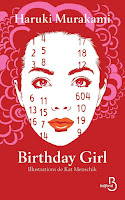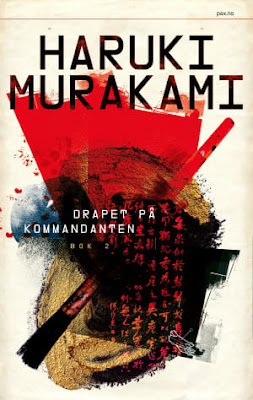I hope the Norwegian translators will forgive me that this announcement comes a few months late. Killing Commendatore came out in Norwegian from Pax this spring. The book was translated by Ika Kaminka and Yngve Johan Larsen. It was not their first collaborative translation. I have to say that I am fascinated by the idea of working on a translation together with somebody else. It seems that such collaboration is in fact fairly common and may take different forms. I have only engaged in it once and found it quite challenging. In 2002 or 2003 I was asked to translate the second part of Norwegian Wood into Polish. The first half had been done by Dorota Marczewska. I read her half, and then proceeded to work on the second half, but as I was translating, I was very aware that the text I was producing was coming out quite differently. After I finished, I was asked to make sure that the two parts fit. Dorota was not available to help for personal reasons, so I ended up having to make many decisions I wasn't sure she would approve of. As a result of this experience, I am very impressed by translators who seem to pull it off seemingly effortlessly. I believe that Ika and Ingve worked by translating alternate chapters and later making sure that the whole reads smoothly.
Another new translation I wanted to mention is the Turkish translation by Ali Volkan Erdemir of the short story Birthday Girl. The book uses illustrations by Kat Menshik, who has also illustrated the German versions of The Strange Library (I wrote about it on this blog here), Sleep, and The Bakery Attack. Her illustrations were later used in several language versions.
 | |||
| https://t24.com.tr/k24/yazi/murakamik-bag,2293 |

Also, in case of Birthday Girl Menshik's illustrations were used in many language versions. Here are four of the covers: German, French, Spanish, and Korean




Ali Volkan Erdemir interviewed Menshik in January 2019. You can read the whole interview here.
If we can trust Google Translate, Menshik talked about her use of color among other things. She said she picks two basic colors for each story. Midnight blue and silver seemed like "the most sensible choice" for Sleep, she chose dark green and brown (or "bronze"?) for The Bakery Attack. For The Birthday Girl she chose three: red, pink and orange.


Menshik did not talk about it in the interview, but it seems that she picked black and off-white as the themes for the The Strange Library, with occasional brown and red.



As I wrote 4 years ago in a blog post about Menschik's illustrations of that last book, illustrations - together with the cover become an important element of the translation. In most cases the translator does not get to express an opinion about the cover or illustrations in the book, and it is easy to imagine that his or her visualization of the story would differ greatly from the cover designer's or illustrator's. And possibly also of the author's. Menschik presumably works on her illustrations inspired by the German translation. Is there some quality in the German translation that inspire certain kinds of illustrations? Do the illustrations then match other language versions?
The situation becomes even more complicated if the original story was illustrated, as was the case with the original of The Strange Library. Here is a picture from the original Japanese publication:
We know from interviews though, that Murakami likes Menschik's illustrations. In fact, all stories illustrated by her were later republished in Japanese using her images. Presumably, Murakami must have approved the original illustrations by
Maki Sasaki, which suggests that the author approves of a variety of
visual responses to his stories. In case of The Bakery Attack the title was slightly altered to say Pan'ya o osou ["To Attack a Bakery" or "Attacking a Bakery"], and with The Strange Library, the title used was the title of the original 1982 story, Toshokan kitan ["Strange Tales of a Library], rather than the 2005 Fushigi na toshiokan ["The Strange Library]. It was advertised in Japan as an "art book with a new feel."






